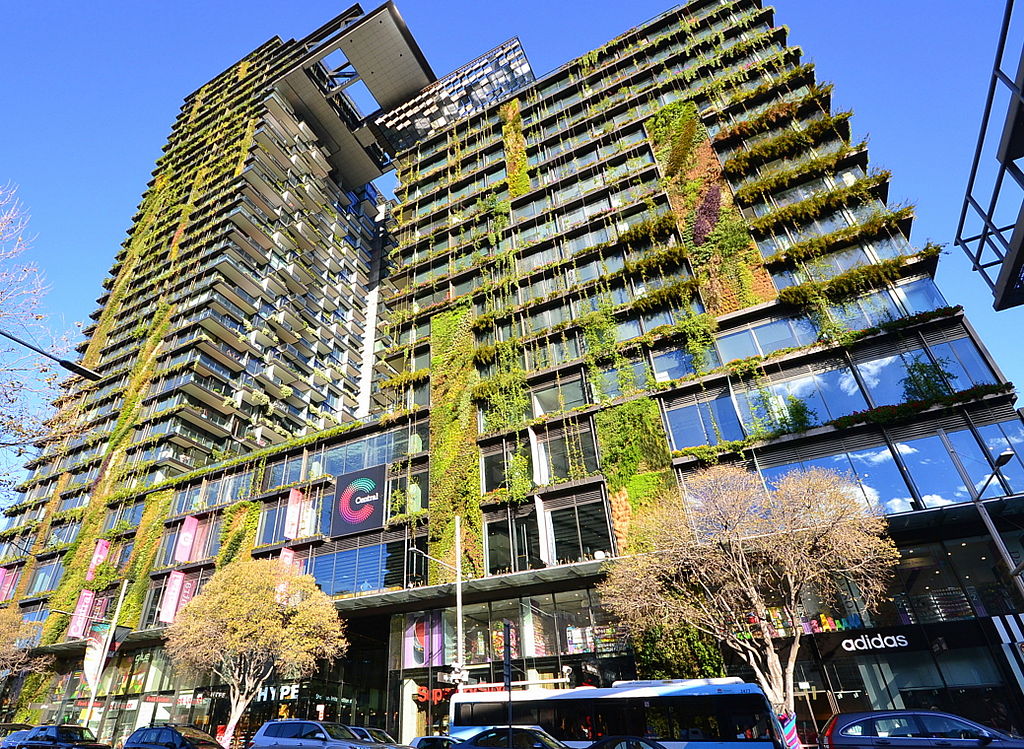Battle for clean air is sending our gardens to new heights
The Nanjing Vertical Forest towers will be festooned with 800 trees and 2,500 cascading plants, which can absorb 18 tonnes of CO2 a year and produce 16.5 tonnes of oxygen each year
C
hina loves building skyscrapers. In 2018, 88 of them sprung up in Chinese cities, a rate that vastly outpaced any other country on earth. Once considered futuristic, these monoliths are now an everyday part of the urban landscape.
But a pair of new towers under construction in the city of Nanjing hints at a different kind of future; one in which our urban environments are designed to help us adapt to the worst effects of climate change. According to the buildings’ designer, Italian architect Stefano Boeri, the Nanjing Vertical Forest towers’ facades will be festooned with 800 trees and 2,500 cascading plants, which will, Boeri claims, absorb 18 tonnes of CO2 a year and produce 16.5 tonnes of oxygen.
But as well as soaking up carbon emissions, these towers will help keep Nanjing’s residents cool as global temperatures increase. They are the latest iteration of a wider trend that uses buildings’ facades and roofs to cram more greenery – and therefore more protection against climate change’s negative effects – into our space-poor concrete jungles.
Birth of the cool
More than two-thirds of the world’s population will live in urban areas by 2050, according to the UN – and as cities become more crowded, climate change promises to make the lives of their citizens ever more fraught and uncomfortable.
Most urban infrastructure exacerbates the effects of climate change. The tarmac and concrete of which our cities are built, for example, act as storage heaters that can raise average yearly temperatures to several degrees above the surrounding area. They also elevate the risk of flooding by providing impermeable surfaces over which rain and floodwater can flow unchecked.
Bringing nature into the city is one way to help lessen the impact of these effects. Green roofs and walls have a cooling effect; they provide shade for buildings while reflecting the sun’s heat away, but more importantly they lower the temperature of the surrounding air through a process called evapotranspiration. A study by the New York Heat Island Initiative estimated that covering 50% of the city in green roofs would lower surface temperatures by up to 0.8˚C – and that for every one-degree reduction in the city’s temperature, roughly 495 million KWh of energy would be saved.
Concrete jungle
Green roofs have been a part of our urban infrastructure for centuries – most Viking buildings used turf roofs as insulation as far back as the 11th century – and today they are making a big comeback. In April 2019, New York became the latest city to pass a law mandating green roofs on all its new buildings, following in the footsteps of cities as diverse as Copenhagen, Córdoba in Argentina and San Francisco.
Climate change is increasing the risk of flooding in urban areas, too – and just like parks and verges, green roofs can act as sinks for absorbing and slowing floodwater. A 2017 study by the University of Toronto found that green roofs can absorb up to 70% of the rain that falls on them, which means they could alleviate a lot of the pressure on cities’ already overworked storm drains.

One Central Park, Sydney. Photo by Sardaka
Like their more modern, vertical counterparts – green, or ‘living’, walls – green roofs not only help to regulate the temperature both outside and inside the buildings they adorn, they also work as air pollution filters. Both can be also used to grow vegetables, which could help to alleviate the threat to food security posed by climate change – a problem that is expected to affect the world’s urban population in particular.
As an added bonus, green walls look great. The world’s tallest green wall, which grows on the sides of One Central Park, Sydney, won the The Council on Tall Buildings and Urban Habitat’s 2014 award for best tall building in the world as much for its aesthetic appeal as its green credentials.
Sod’s law
Greening up our cities’ roofs and walls does seem an easy, low-cost intervention to help urban areas cope with the effects of climate change, reduce levels of air pollution, convert CO2 emissions into oxygen and prettify our urban environments into the bargain. But the technological and engineering considerations make installing these measures a little more complicated than they sound. Green roofs – or rather the soil or substrates they require – are heavy, which means they aren’t suitable for all buildings. Living walls, meanwhile, depend for their success on a combination of good design, plant selection, technology and upkeep; get these wrong, and their beautiful and living verdancy can quickly become the opposite. Four years after the UK’s first green wall was installed in Islington, north London, it had turned from a £100,000 environmental showpiece into a dead and withered eyesore thanks to a breakdown in its watering system.
There are concerns, too, that developers are including green roofs and walls in their planning applications purely to tick sustainability boxes, and even to legitimise otherwise unsustainable projects.
But as the planning laws mentioned above show, some of the world’s biggest cities are now taking these interventions seriously. They can see the potential in green roofs and walls as low-cost, long-term climate adaptation and mitigation measures, that – like a good exercise regime – can help our urban environments not just look better, but feel better too.
The ideas presented in this article aim to inspire adaptation action – they are the views of the author and do not necessarily reflect those of the Global Center on Adaptation.